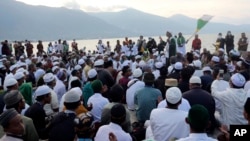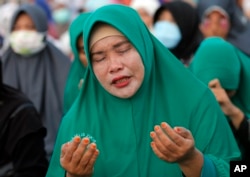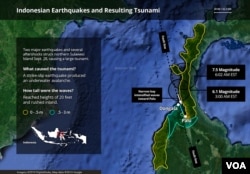In disaster-struck Palu, Indonesia, survivors came together Friday for the traditional weekly prayer, one week after the earthquake and tsunami that hit the island of Sulawesi.
The 7.5 magnitude earthquake and a massive tsunami that followed killed more than 1,500 people, with scores more believed buried in deep mud and under debris of collapsed buildings and homes.
Meanwhile, Indonesia's Central Sulawesi province has begun to take its first steps toward recovery.
Some services restored
Electricity has been restored to some parts of Palu, the city of just over 370,000 residents that endured the brunt of the disaster. Shops have reopened, a major phone network is back in operation, and a small number of commercial flights are expected to resume flying in and out of the city's wrecked airport.
As emergency relief slowly arrives in Sulawesi, authorities have begun stepping up security to end to the sporadic looting by residents desperate for food and clean water.
The official death toll has inched up to 1,558 as of late Thursday, with 70,000 others displaced.
Tsunami
The 7.5 magnitude quake triggered a huge tsunami that turned scores of houses and buildings in Palu into mounds of debris. Roads and bridges were washed away, cutting off at least three districts near Palu with a combined population of over 1 million people.
Indonesia and its 18,000 islands are located along the Pacific Ocean's "Ring of Fire" and are frequently struck by earthquake, volcano and tsunami activity.
In 2004, a 9.1-magnitude earthquake off Sumatra and a subsequent tsunami killed about 230,000 people in 14 Pacific countries. About half of those deaths occurred in Indonesia.









